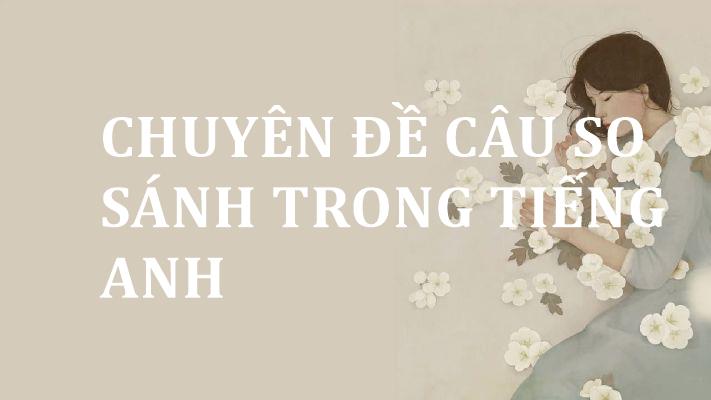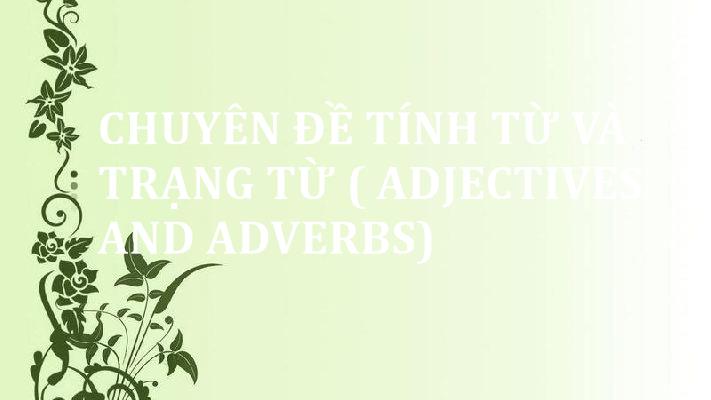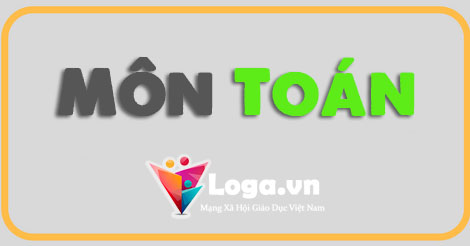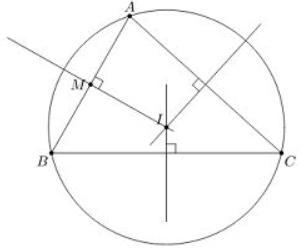UNIT 3: AT HOME
(Ở nhà)
I.NEW WORDS:
- His /hɪz/: của cậu ấy
- Her /hə(r)/: của cô ấy
- Family /ˈfæməli/(n): gia đình
- Father /ˈfɑːðə(r)/(n): cha
- Mother /ˈmʌðə(r)/(n): mẹ
- Brother /ˈbrʌðə(r)/(n) : anh, em trai
- sister /ˈsɪstə(r)/(n): chị , em gái
Numbers 21 – 100:
- Twenty one: 21
- Thirty /ˈθɜːti/: 30
- Forty /ˈfɔːti/: 40
- Fifty /ˈfɪfti/: 50
- Sixty /ˈsɪksti/: 60
- Seventy /ˈsevnti/: 70
- Eighty /ˈeɪti/: 80
- Ninety /ˈnaɪnti/: 90
- One hundred /ˈhʌndrəd/:100
- a lamp /læmp/: đèn
- a bookshelf /ˈbʊkʃelf/: giá sách
- a chair /tʃeə(r)/: ghế tựa
- a couch /kaʊtʃ/: ghế sa-lông
- an armchair /ˈɑːmtʃeə(r)/: ghế bành
- a table /ˈteɪbl/: cái bàn
- a stool /stuːl/: ghế đẩu
- people/ˈpiːpl/: người
- a bookcase/ˈbʊkkeɪs/: tủ sách
- a stereo /ˈsteriəʊ/: máy nghe nhạc.
- How many /ˈmeni/: Bao nhiêu.
- an engineer /ˌendʒɪˈnɪə(r)/: kỹ sư
- a doctor /ˈdɒktə(r)/: bác sĩ
- a nurse /nɜːs/: y tá.
II.GRAMMAR:
1. There: có.
|
Ex: There is a book on the table. (vì A book là số ít nên chia là “Is”)
There are three pens on the table. (vì three pens là số nhiều nên chia là “are”)
2. Cách thành lập danh từ số nhiều.
a. Những danh từ tận cùng là x, ch, sh, s ð thêm “es”
Ex: a box ð boxes.
A couch ð couches.
b. Danh từ tận cùng là “y”, trước nó là 1 phụ âm ð đổi “y” thành “I” và thêm “es”.
Ex: A city ð cities.
A kitty ð kitties.
c. Danh từ tận cùng là “y”, trước nó là 1 nguyên âm ð thêm “s”
Ex: A play ð plays.
A boy ð boys.
d. Danh từ tận cùng là “f” hoặc “fe” ð đổi “f”, “fe” thành “v” rồi thêm “es”.
Ex: a wife ð wives.
A leaf ð leaves.
e. Danh từ tận cùng là “o” mà trước nó là 1 phụ âm ð thêm “es”
Ex: a tomato ð tomatoes.
f. Danh từ tận cùng là “o” mà trước nó là 1 nguyên âm ðthêm “s”.
Ex: a studio ð studios.
* Một số trường hợp đặc biệt (phải học)
A man ð men những người đàn ông
A woman ð women những người phụ nữ
An ox ð oxen những con bò
A foor ð feet những bàn chân
A child ð children những đứa trẻ
3. Cách phát âm đuôi “s”, “es” và “ies”.
a. Đọc là ‘s’ sau f, k, p, t.
Ex: maps, clocks …
b. Đọc là ‘iz’ sau ces, ses, xes, zes, ges, ches, shes…
Ex: Villages, pieces, watches …
c. Đọc là “z” nếu không phải là 2 trường hợp trên.
4. How many – Có bao nhiêu.
- How many được dùng để hỏi về số lượng đồ vật hoặc người ở nơi nào đó.
|
Ex: How many people are there in your family? có bao nhiêu người trong gia đình bạn?
ð There are four people in my family. Có 4 người trong gia đình tôi.
5. Hỏi và trả lời về đồ vật.
A. Đồ vật số ít.
|
B. Đồ vật số nhiều
|
6. Cách hỏi và trả lời về người.
|
|
||||
Ex: Who is this? – This is my friend. Ai đây? – Đây là bạn của tôi.
Who are they? – They are Mai and Lan. Họ là ai thế? Họ là Mai và Lan.
7. Cách đổi một câu ở dạng số ít sang số nhiều.
Có 3 bước:
a. Chuyển chủ ngữ.
I ð we
You ð you
He/ she/ it ð they.
This/ that ð these/ those.
b. Chuyển động từ.
Am / is ð are
Does ð do
Vs/es ð Vo
c. Chuyển danh từ số ít qua số nhiều.
Ex: I am a pupil ð We are pupils.
She is a doctor ð they are doctors.
She does homework ð they do homework (homework không có dạng số nhiều)
This is a map ð these are maps.
It is a watch ð they are watches.
9. Cách hỏi và trả lời về nghề nghiệp.
|
Ex: What does he do? – He is a doctor.
What do they do? – They are workers.
10. Cách hỏi và trả lời về địa điểm, nơi chốn với “to be”.
|
Ex: Where are you? – I am in the kitchen. Bạn ở đâu? – Mình ở trong nhà bếp.
Where is your books? – They are in my schoolbag
III.EXCERCISES:
A/ Hãy chuyển các danh từ sau sang danh từ số nhiều.
|
1 |
Family |
|
7 |
Lamp |
|
|
2 |
House |
|
8 |
Stool |
|
|
3 |
armchair |
|
9 |
Telephone |
|
|
4 |
Bookcase |
|
10 |
Engineer |
|
|
5 |
Table |
|
11 |
Nurse |
|
|
6 |
Person |
|
12 |
sister |
|
B/ Hãy viết phiên âm ( Cách phát âm) của cách phát âm số nhiều “s” và “es” trong các từ sau theo mẫu.
Ví dụ: - Chairs [ z ]
- books [ s ]
- bookcases [iz]
1. students [ ] 4. telephones [ ] 7. couches [ ]
2. families [ ] 5. persons [ ] 8. nurses [ ]
3. sisters [ ] 6. houses [ ] 9. tables [ ] 10. lamps [ ]
C/ Hãy điền vào chỗ trống dạng đúng của động từ “to be”.
- How old …………………. Your mother?
- My books ……………………… on the table.
- ………………………… your brother 18 years old?
- there …………………….. 45 students in our class.
- ……………………….. there a board on the wall.
- you and I ……………….. doctors.
- ………………………. I your teacher?
- No, you ………………………, you ……………………. My sister.
D/ Hãy đặt câu theo mẫu sau:
Chairs/ dining-room?/ 6.
P1: How many chairs are there in the dining-room?
P2: There are six chairs in the dining-room.
- classrooms/school? / 20
…………………………………………………………………….
…………………………………………………………………….
- televisions/living-room? / 1
…………………………………………………………………….
…………………………………………………………………….
- bookshelves/ bedroom? / 1
…………………………………………………………………….
…………………………………………………………………….
- windows/ house/ / 6
…………………………………………………………………….
…………………………………………………………………….
- couches/ living-room? / 2
…………………………………………………………………….
…………………………………………………………………….
- people/ family ? / 5
…………………………………………………………………….
…………………………………………………………………….
E/ Sắp xếp các từ bị xáo trộn thành câu có nghĩa.
- My family/in/are/people/four/there……………………………………………………………
- lives/brother/my/house/in/Tan Lap street/on/a ………………………………………………...
- years/78/grand/his/father/old/is………………………………………………………………..
- are/many/there/arm chairs/how/living-room/her/in?
………………………………………………………………………………………………..
- is/Lan/student/your?.............................................................................................................
- there/a/wall/on/picture/is/in/living-room/your/the?
……………………………………………………………………………………………………
IV.KEY:
A.
- families
- houses
- armchairs
- bookcases
- tables
- people
- lamps
- stools
- telephones
- engineers
- nurses
- sisters
B.
1. students [ s ] 4. telephones [z ] 7. couches [iz ]
2. families [ z] 5. persons [ z ] 8. nurses [ iz ]
3. sisters [ z] 6. houses [ iz ] 9. tables [ z ] 10. lamps [ s ]
C.
- is
- are
- Is
- Are
- Is
- Are
- Am
- Aren’t…………are
D.
1. P1: How many classrooms are there in your school?
P2: There are twenty classrooms in the dining-room.
2. P1: How many televisions are there in the living-room?
P2: There is a chair in the dining-room.
(tương tự 3,4,5)
E.
1.There are four people in family.
2.My brother lives in a house on Tan Lap Street.
3.His grand father is 78 years old.
4.How many chairs are there in her living-room?
5.Is Lan your student?
6.Is there a picture on the wall in your living-room?







